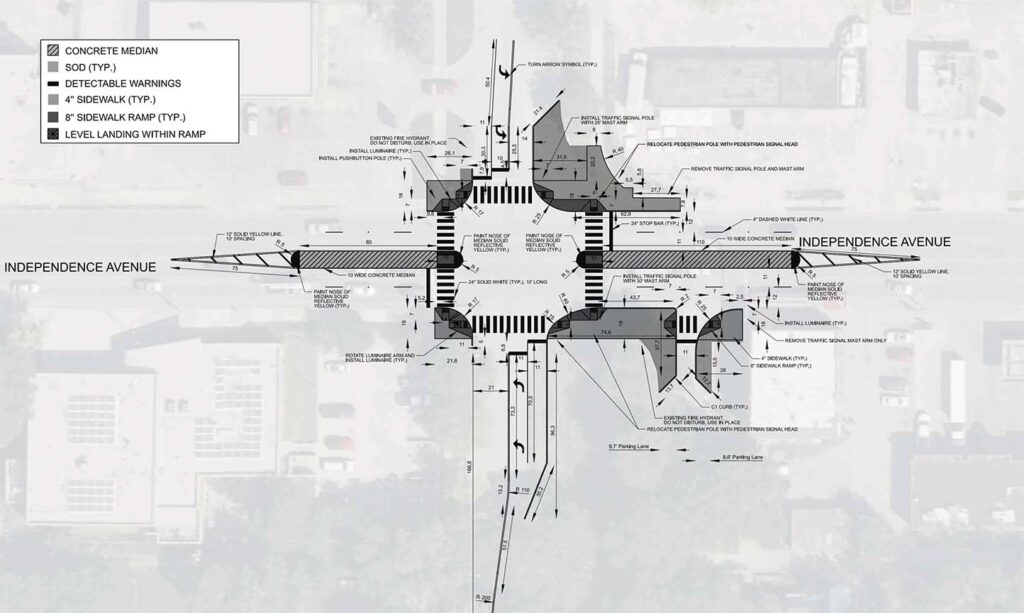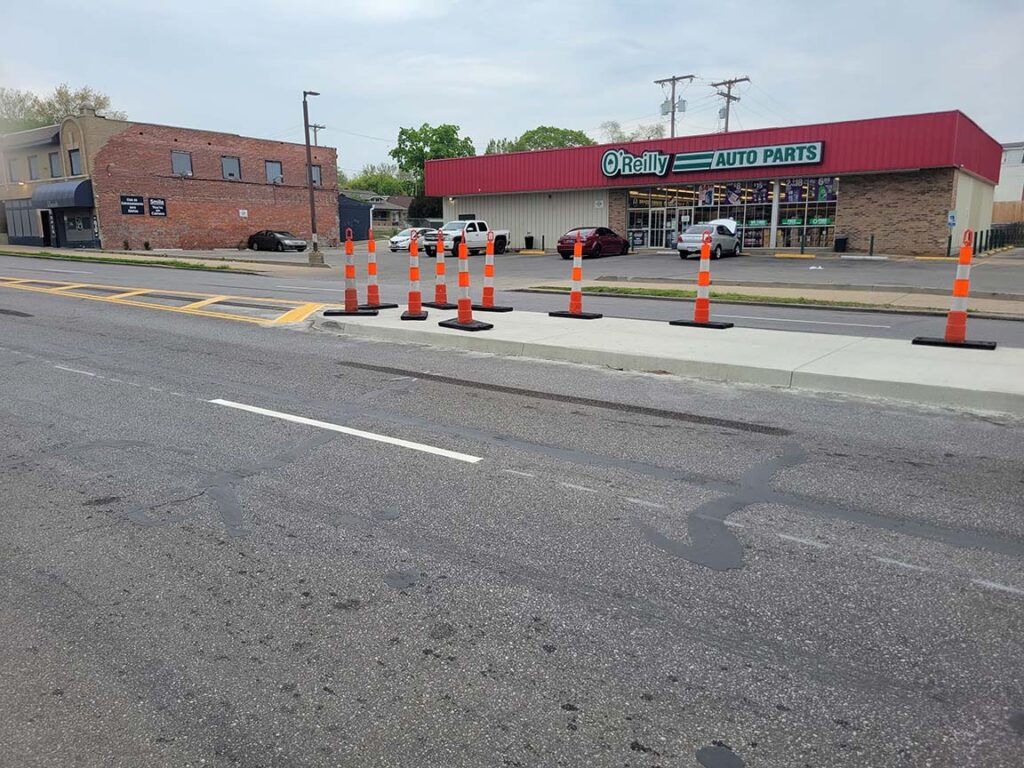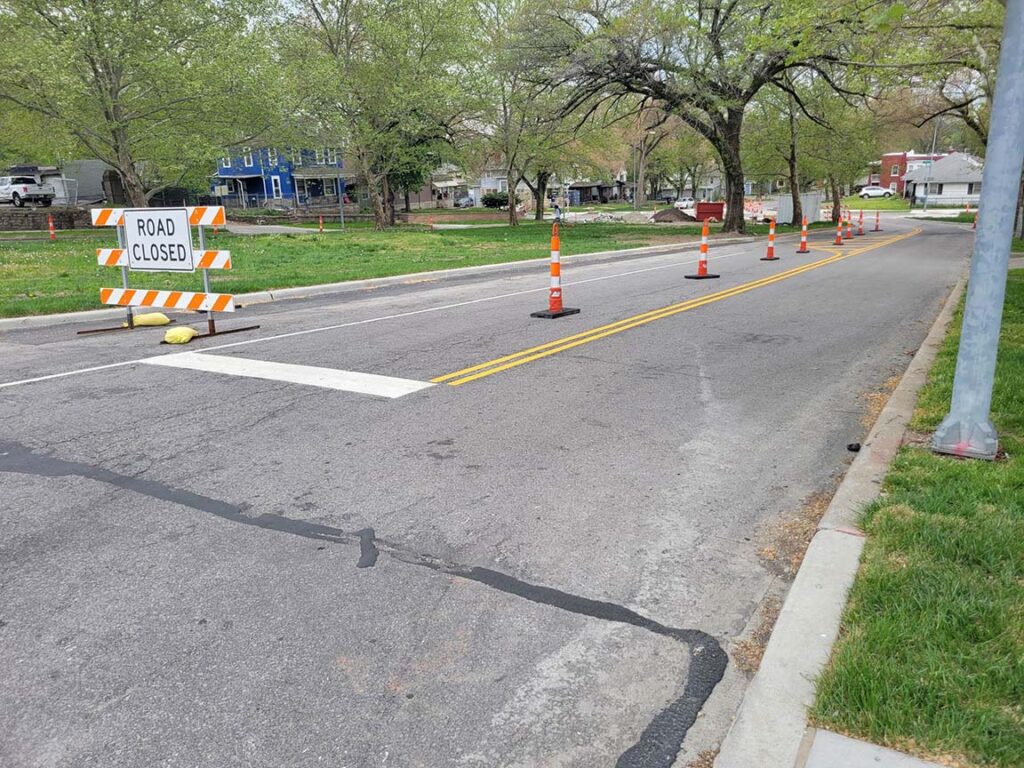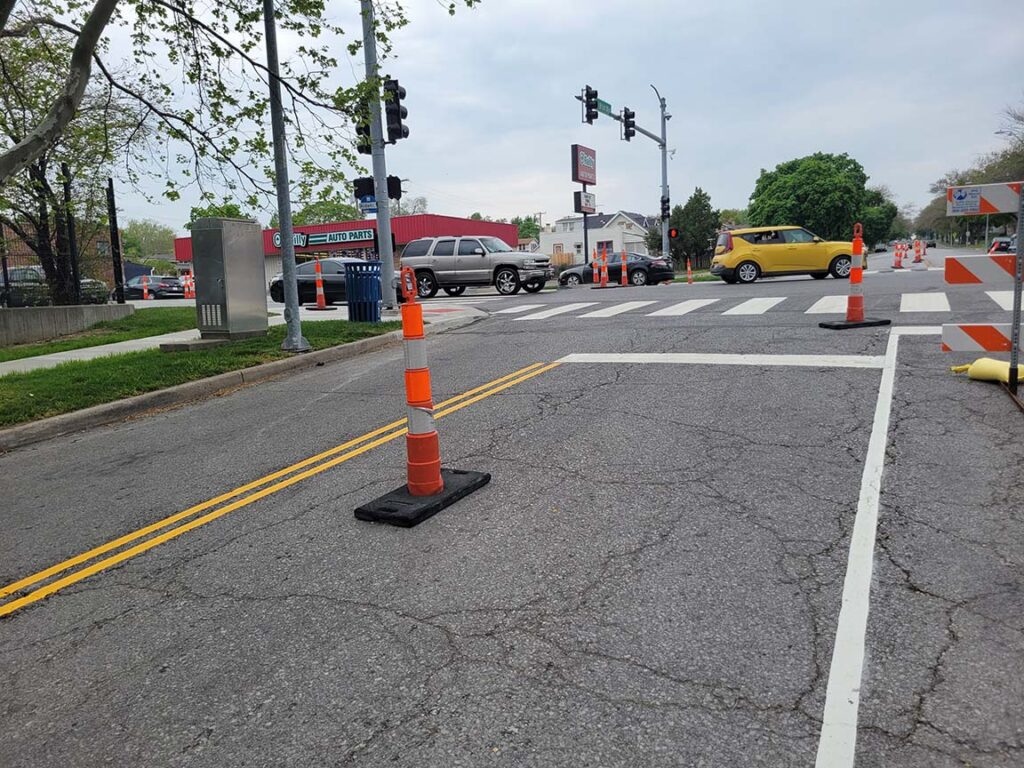
Michael Bushnell
Opinion column
Earlier this spring, the City broke ground on intersection improvements at Independence Avenue and Van Brunt Boulevard as part of their much ballyhooed Vision Zero program to reduce injuries and fatalities at high-injury intersection locations city-wide.

The new config involves constructing two concrete islands in the middle of Independence Avenue on both the east and west portions of the intersection, removing the current left turn lanes on the Avenue. Also included is the realignment of Van Brunt Boulevard, much like the realignment of Benton and Independence Boulevards in 2016 so that the lanes more closely align on both sides of the Avenue.
But that plan came as a complete surprise to neighborhood leaders and community stakeholders this NewsDog spoke with as soon as the orange cones were placed and concrete was poured. It should be noted that the intersection’s initial design made it impossible for a larger vehicle, say a 76,000 pound, 48-foot fire truck for example, to turn south on Van Brunt from eastbound Independence without creating an extreme safety hazard for anyone turning left off Van Brunt on to westbound Independence Avenue.

Last but certainly not least, the new plan is a complete departure from the Independence Avenue overlay plan that was discussed by community stakeholders and approved by the mayor and full city council in 2016. The new plan also largely ignores recommendations made in a Mid-America Regional Council (MARC) study in 2018 that recommended that the Independence and Van Brunt intersection be realigned to match Independence and Benton or Independence and Hardesty. Can you say “baby out with the bathwater”? Both the 2016 overlay and the 2018 study had multiple opportunities for public engagement. The new plan, not so much.

The Dog asked around, and none of the neighborhood leaders we spoke with – and we spoke with at least three – knew nothing of the project. Same with the Northeast Chamber of Commerce: no notice received. Given the Dog’s involvement as a neighborhood leader back in the day, public engagement certainly would be part of the process, right?
Well, sadly, no.
We reached out to the city and asked about the level of community engagement this project was privy to. The response: three Facebook posts, a tweet on the City’s Twitter account, a notice posted on the Bike Walk KC website and, allegedly, postcard mailings to community stakeholders. Additionally, a “public” meeting was held at the East Village Transit Center in March of 2022 that was attended by “residents and Fox 4.”
Needless to say, that doesn’t really add up to “engagement,” but under the new communications policy rolled out by the resident poet laureate Melissa K and City Manager Brian “We-can-lie-to-the-media” Platt, it apparently passes muster, Missouri Sunshine Law notwithstanding.
Here’s the bottom line, this Newsdog doesn’t fault the messenger. The messenger in this case is just part of a larger, flawed city communications model that routinely restricts the public’s ability to get the truth from a government entity. What we do fault, however, is a centralized communications department, think the Russian News Agency Pravda here, that makes it next to impossible for journalists to effectively do their job.
The old system, with PIOs (Public Information Officers) in every city department, worked well and allowed members of the 4th Estate – that’d be the press – the opportunity to ask impactful questions, often speaking with engineers and planners directly in order to get a detailed, truthful. and accurate message for readers and viewers.
The new centralized communications policy doesn’t allow for this and journalists often are forced to miss deadlines in the process. Moreover, it allows the City to quite literally control the narrative, not allowing the truth to be set free until after the damage is done, or in this case, after the concrete is poured and the new lane striping is down.
Another, apparently new, post-COVID practice we fault, is a so-called public notice policy that doesn’t allow for proper critical public engagement. That engagement often points out major design and logistic flaws that greatly hinder first responders, in this case firefighters, in their ability to safely respond to fire service calls without killing someone in the process due to substantial design flaws that couldn’t be pointed out during a public engagement process. Remember the Truman Road bike lanes debacle? Posting meeting notices on city government social media platforms then expecting the general public to just KNOW it’s there doesn’t count for public engagement and makes the strong case why newspapers should be used as a platform for the posting of public notices.
Lastly, if this is the new communications paradigm for notifying the public of upcoming city projects, then neighborhoods and the local business community need to watch city communications channels like a hawk, keeping an eye out for such projects like this that fly through the approval process with a read-vote-pass-enact with an accelerated effective date, offering zero opportunity for public comment. We’ve editorialized about the case for strong neighborhoods and we’ll make that case again here because instead of having a seat at the table on this one, Northeast neighborhoods just got served up a heaping bowl of excrement in the form of a non-workable intersection plan that puts taxpayer and first responder lives in danger.
Enjoy your dinner!
















